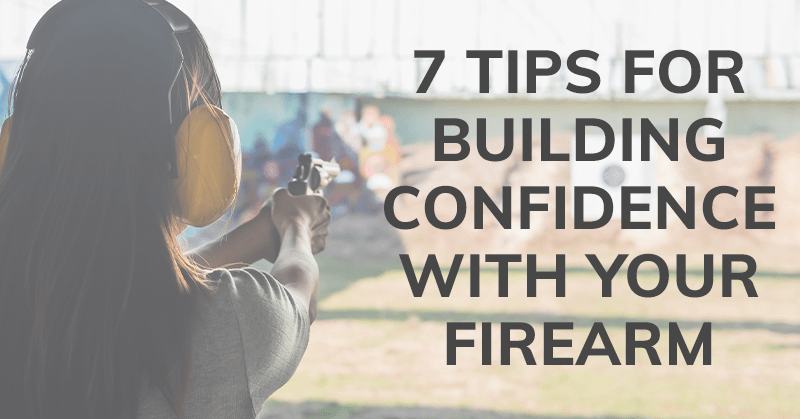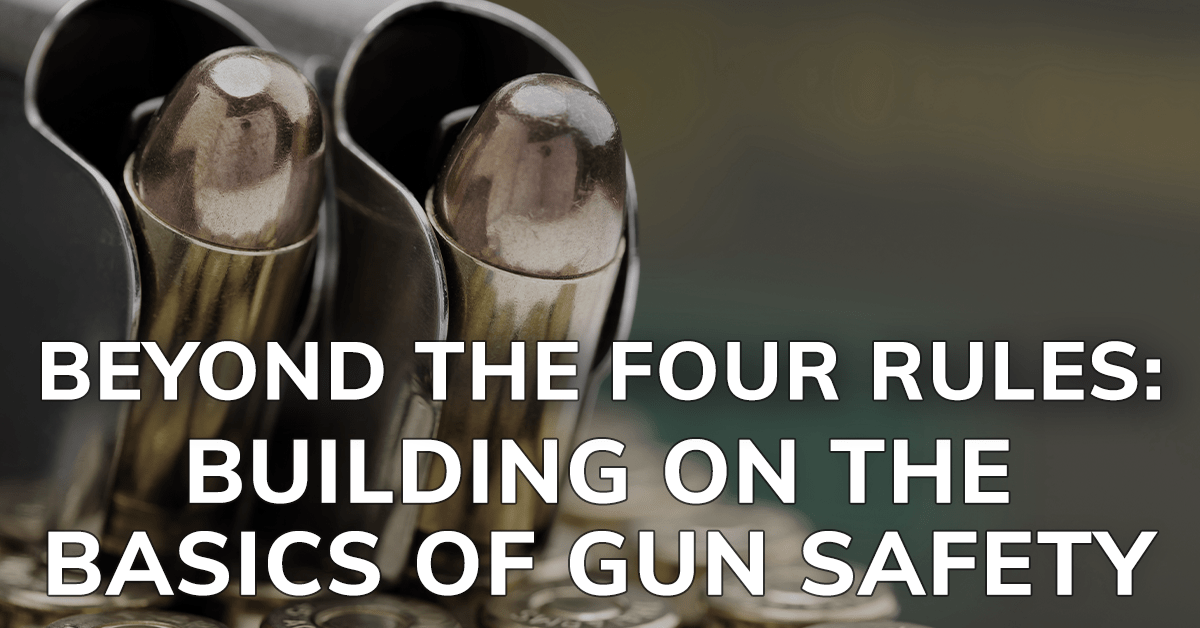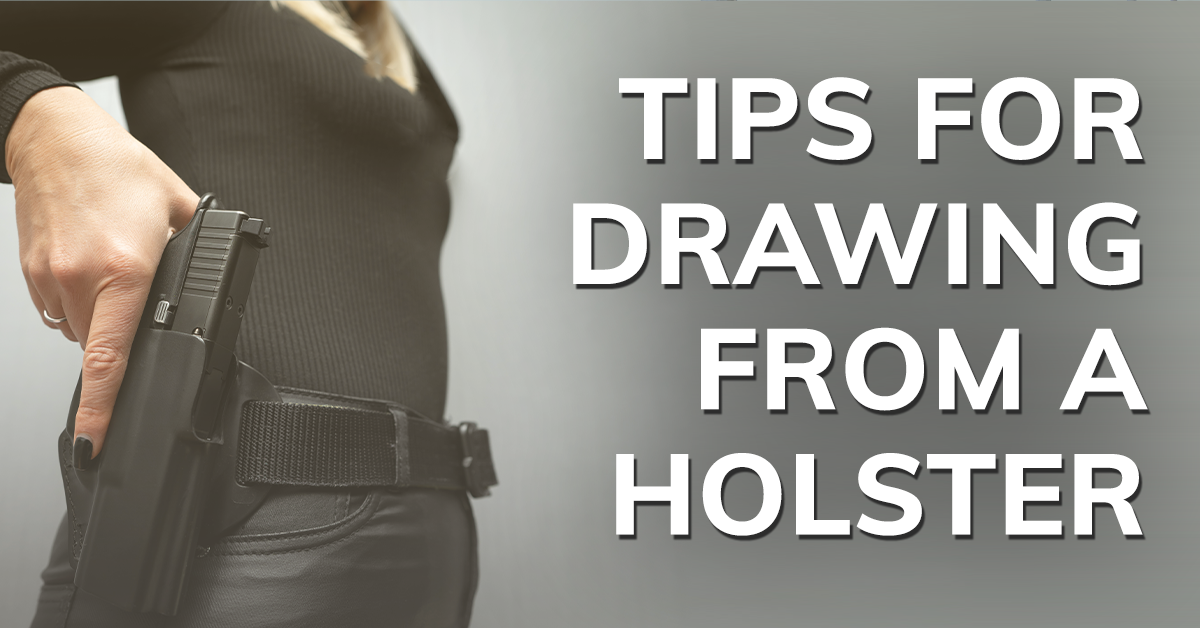Orders Over $100 Ship FREE (USA)!
Orders Over $100 Ship FREE (USA)!
CONCEALED CARRY
(Apparel with holster pockets or concealed-carry features)
PARTS & GEAR
RANGE STYLE
Gift shopping & not sure about size or style? Give a gift card instead!
GIFT IDEAS
EXPLORE
BFCM Sale 20% Off every item! EXTENDED
Black Friday & Cyber Monday EXTENDED: Indulge in Luxury, Pay Less.
Shooting Stance
9 min read
“Stance” is the word shooters use to refer to body position while shooting.
There are literally dozens of minor variations for each of the common handgun shooting stances. This is because every body on the planet is different from every other body. What works well for you may not work quite as well for the person standing next to you. If a particular stance works well for someone whose basic body shape and proportions are similar to yours, it’s possible that the same basic stance will work well for you, too. But because your body is not identical to theirs, you will probably still have to tweak the stance a little to make ityour stance.
Some shooters choose to make stance something like a religion: you must use a particular stance, or you’re not really a shooter. Please do your best not to listen to the dogmatists. Each stance has its own strengths and weaknesses. After you have tried them all, you will probably realize that one stance works best for you. That’s good, but you also need to be reasonably familiar with them all, and able to get good hits from all of them.
If you ever need to use this stuff for keeps, the chances are that you will not use any particular foot position — you’ll be running, or crouched behind something, or ducking. That doesn’t mean you “aren’t using a stance.” Every time you shoot the gun, your body is in some kind of stance. Remember, stance just means your body position while shooting. Even without considering what your feet are doing, you still hold the gun in a particular way (probably the way you have practiced most often). Your arms are either straight or bent. Your grip is either firm or loose. Your upper body is either squared to the target or it’s not. All of these things together make up a stance.
The three basic defensive handgun stances are Weaver, Chapman, and Isosceles. Weaver and Chapman are named after the men who first popularized them, while Isosceles is named after the triangular shape made by the shooter’s arms and body. All three stances have been used both in competition and on the street, and as I said above, each has its own strengths and weaknesses.
Weaver
Jack Weaver was a Deputy Sheriff in the 1950′s when he began standing this way in competition. A young Jeff Cooper quickly adopted Weaver’s stance, and later popularized it at his shooting school, Gunsite. The Weaver stance was a truly radical departure from the way things were done at the time. Until Jack Weaver came along, most handgunners held the gun with one hand, and fired quickly from the hip, or from the shoulder while sighting down the extended arm. Few held the gun with both hands, and few used the sights.
|
Weaver Stance
 The Weaver stance can either be tucked in close …
 … or thrust out quite a ways.
In either case, its chief defining characteristic is the push-pull tension produced by pushing out with the strong hand while pulling in with the weak hand. |
In the Weaver stance, the body is bladed partly sideways in relation to the target rather than squared towards it. The elbows are flexed and pointed downward. The strong-side arm is slightly straighter than the weak-side arm. The shooter pushes out with the gun hand, while the weak hand pulls back. This produces a push-pull tension which is the chief defining characteristic of the Weaver stance.
 Good: Seen from above, a good Weaver looks like this, with the elbows in.  Bad: The elbows should be tucked close to the body, not sticking out to the sides like this. |
Weaver depends on muscles rather than skeletal support for recoil control. Because women tend to have less upper-body musculature than men do, Weaver tends to be slightly more popular with men than with women. While many women have no problem with it at all, Weaver can be difficult for some. Women who are very well-endowed may have difficulty achieving stability with this stance, because attaining good stability in Weaver really requires your elbows to point downwards rather than out to the sides.
To engage targets to one side or another in the Weaver stance, simply bend your elbows to bring the gun around. Weaver is the most flexible stance for working in tight quarters, and for engaging targets in multiple directions.
 To engage targets to the side in Weaver, simply bend one elbow more sharply to bring the gun around. |
In Weaver stance, cross-dominance may become an issue to keep in mind. Shooters who are right-handed but left-eyed, or left-handed but right-eyed, may find that even when Weaver works well for them in slowfire, it tends to fall apart when speeded up or under stress. Because of the angle at which the gun must be held in Weaver, cross-dominant shooters may do better using another stance.
 Weaver works best when the body is bladed toward the target, rather than squared to it. This may be a problem for those wearing body armor, but for ordinary citizens it is unlikely to be an issue. |
Police officers wearing body armor need to remember that blading sideways toward the target, which works so well in Weaver, may also open up the side of the body armor to the target. If you often wear body armor in real life, you may want to practice a more squared-off version of Weaver instead of the traditionally bladed one.
The Chapman stance is named for Ray Chapman, another shooter who had a great influence on the styles handgunners use today. Chapman adopted Weaver’s push-pull stance, and then changed it just slightly.
Chapman uses the same push-pull tension which defines the Weaver, but instead of both elbows being bent, the gun side elbow is held straight and locked in place. Assuming a right-handed shooter, the right arm is punched straight out, while the left elbow is bent and the left hand pulls back to provide tension. As a result of this change, Chapman gets its stability from both muscle and skeletal support. This makes it a little more friendly than Weaver for those who lack upper-body muscle strength.
|
Chapman Stance
 Chapman stance: the strong-side arm is thrust straight out and locked in place, while the weak hand pulls back against it. This produces the same push-pull tension which defines the Weaver stance, but uses both skeletal and muscular support.  In Chapman as in Weaver, the elbow should be flexed downwards rather than pointed out to the side. |
Because the ideal Chapman stance involves sighting directly down the shooter’s dominant arm, cross-dominance remains a minor issue in Chapman just as it is in Weaver.
 A left-eyed shooter may use her own right arm as a riflestock in the Chapman stance. This works well on the range, but sacrifices too much peripheral vision if you are practicing for self-defense. |
Occasionally, you will find a left-eyed person who shoots right-handed Chapman by resting her head on her bicep and using her right arm as if it were a rifle stock (see photo). This works well enough when target shooting on the range, but is a bad idea for defense work because it cuts your field of view into a very narrow area. Given that tunnel vision is likely to be a problem anyway, narrowing your visual field in this way is a bad idea because it may prevent you from seeing the attacker’s friends or the arriving police.
Isosceles
While the Isosceles stance had been around for several years, it did not really become popular until some young upstarts named Brian Enos and Rob Leatham started using it to win IPSC competitions in the early 1980′s.
|
Isosceles Stance
 In Isosceles, the arms are straight and the gun is positioned directly in front of the shooter. This produces the triangular shape which gives the stance its name. |
There are two basic variants of the Isosceles stance. In Traditional Isosceles, the feet are parallel and pointed toward the target, the knees are straight or only slightly flexed, and the entire body is upright. This is an acceptable range stance provided recoil control is not an issue and you don’t need to make rapid follow-up shots. However, if you are practicing for self-defense, you will probably want to use the Modern Isosceles stance instead.
 The Traditional Isosceles stance is often seen on the range. It works well there, but does not provide the flexibility and speed of movement required by self-defense shooters. |
In Modern Isosceles, the feet are roughly shoulder width apart, with the gun-side foot closer to the target than the off-side foot. The knees are flexed, and the entire body leans slightly toward the target. The shoulders are closer to the target than the hips, and the hips are more forward than the knees. The shoulders are rotated forward and the head, rather than being upright, is vultured down behind the sights. The entire body thus has an aggressively forward appearance, and is poised to move quickly if necessary.
 The Modern Isosceles stance is aggressive-looking, and provides a stable platform which allows the shooter to move in a hurry if needed. In Modern Isosceles, the shoulders are forward of the hips, and the hips are forward of the knee and lower legs. Both knees are flexed slightly. |
In Weaver, if you need to engage targets to one side or the other, it is accomplished by bending your arms to bring the gun around. In Isosceles, think of the entire upper body as the gun turret on a tank. When you need to engage a target to the left or right of the original one, you will pivot your entire upper body smoothly to present to the new target.
 To engage targets to the side in Modern Isosceles, think of the entire upper body as the turret on a tank, which swivels as needed to aim at the threat. |
In either variant of Isosceles, the skeletal system provides most of your recoil control. Rather than actively controlling the recoil using muscle strength as in Weaver or Chapman, Isosceles shooters passively control recoil by absorbing it with their entire bodies.
Isosceles stance works well for those with eye dominance issues because the gun is easily aligned with either eye from the center position.
Perhaps the biggest weakness of the Isosceles stance is that it tends to bounce the gun as the shooter is moving. Relaxing the arms slightly, so the elbows are not locked out, reduces the jarring but lessens the skeletal support necessary for recoil control in this stance. Perhaps the ideal solution to this difficulty is learning to move smoothly, and also learning how to easily transition between Isosceles, Chapman, and Weaver stances depending upon the type of shooting being done.
I just made up this phrase and you won’t find it anywhere else that I know of. But …
Some women will just bend over backwards in order to shoot. I think the reason so many do this is because a woman’s center of gravity is a lot lower than that of an equal-statured man. Where most men can hold a heavy gun out in front of them without strain, some women have difficulty doing so for long. There’s some counter-balancing going on, too. Since women have proportionately less upper body strength than men do, and because there are those curves hanging out in front, bending far backwards causes the lifting muscles to do a little less work. Finally, many new shooters are somewhat afraid of the gun, and so you see them doing this to get their faces further away from it.
|
Faux Isosceles
 Some women will just bend over backwards in order to shoot. Please don’t do this … |
There are two problems with this bent-over-backwards stance.
First, it just looks goofy. If you want to be taken seriously as a competent shooter, it’s good to look the part. Looking as if you’re afraid of the gun does not help much in the “take me seriously” department.
Second, and more important, it’s not stable. It might be good enough for slow, controlled target shooting, when you’re shooting light loads and the speed of follow-up shots really doesn’t matter. But if you’re practicing for self-defense, it’s best to get a more solid foundation underneath you, and to position your body so you’re not so far off balance.
While Weaver, Chapman, and Isosceles are the dominant triumvirate of defensive handgun stances, they are not the only stances by any stretch of the imagination. There are many, many other handgun stances familiar to shooters worldwide.
 Shooting from the hip is sometimes called the “Speed Rock” or “Shooting from Retention.” It’s very fast for close encounters, but doesn’t have a great track record for accuracy at distances greater than a few yards. |
 Here’s a one-handed stance which may be familiar to Bullseye and target shooters.Until Jack Weaver started using two hands in the Leatherslap competitions in the southern US during the 1950′s, most handgun shooters used this stance or shot from the hip as in the picture above. |
 Most modern defensive shooters use this stance when they must shoot one-handed. The weak hand is brought up close to the body, underneath the pectoral muscles, and the weak hand is clenched into a fist. Because of the body’s sympathetic nervous system, clenching the weak hand provides an increased measure of strength to the strong hand. |
Also in Skill Building: The Fundamentals

7 Tips for Building Confidence with Your Firearm
4 min read

Beyond the Four Rules: Building on the Basics of Gun Safety
3 min read

Tips for Drawing From a Holster — A Beginner's Guide
3 min read

